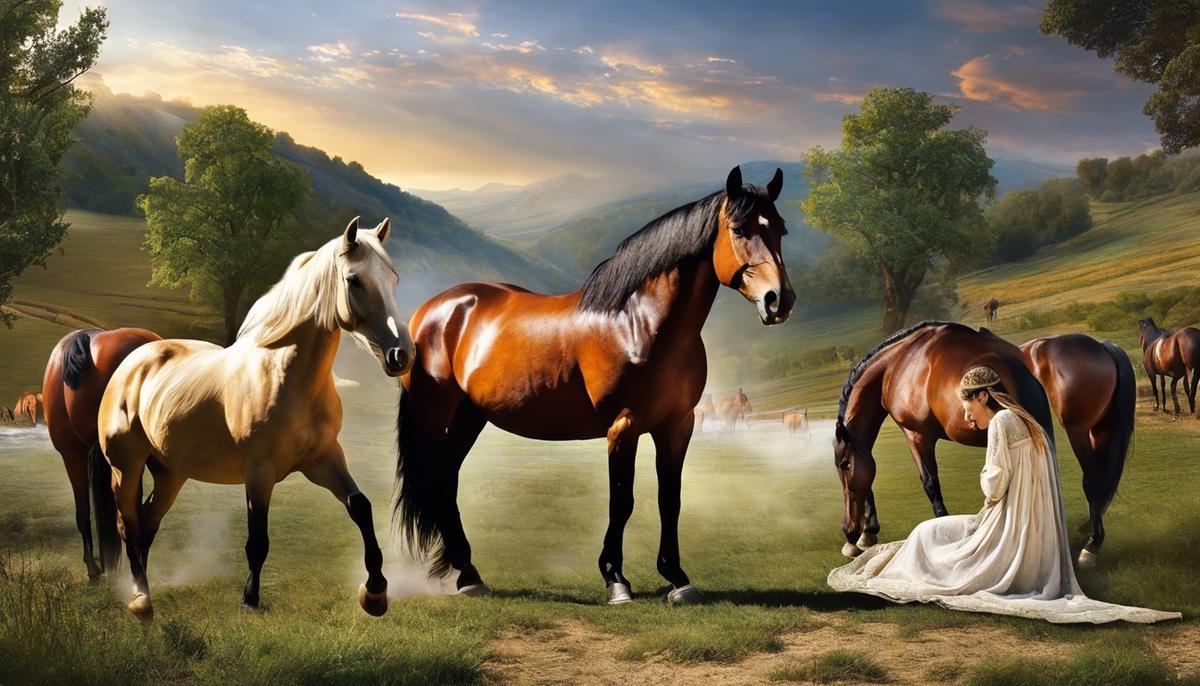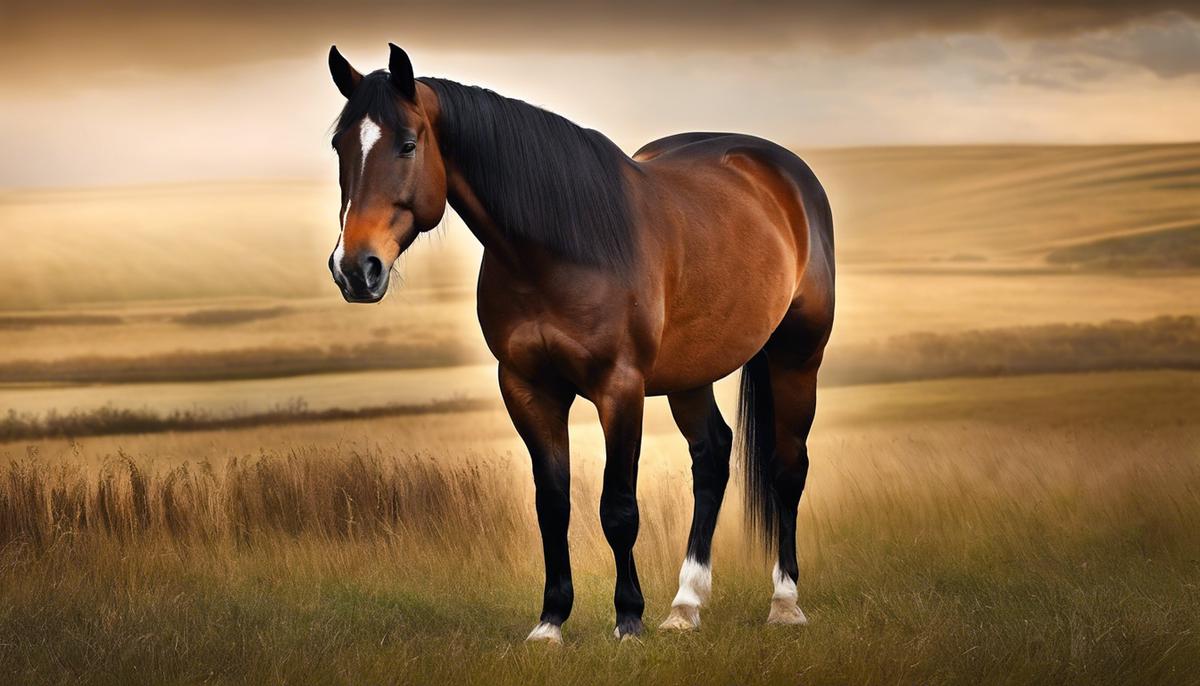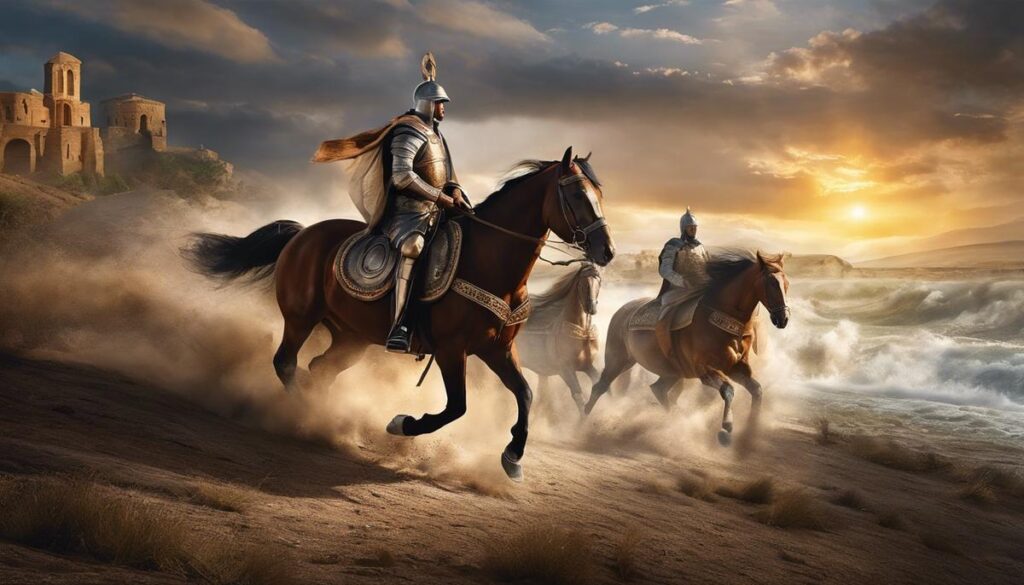In the intricate tapestry of biblical symbolism, horses occupy a unique niche, often reflecting power, authority, and warfare. Meanwhile, the color brown carries its own wealth of significance, pertaining to humbleness, reliability, and endurance. This divine confluence of the horse’s representation and the symbolism of brown within biblical narratives provides a fascinating theme for exploration and understanding. Furthermore, the mystical domain of dreams, which have long been interpreted for spiritual messages within various religious traditions including Christianity, brings forth another dimension to this study. Herein, we endeavor to deconstruct and comprehend the imagery of a brown horse within the biblical dream context, an amalgamation of potent symbols capable of conveying profound spiritual insights.
Biblical symbolism of horses
Horses in the Biblical Context: Symbolism and Significance
Horses, magnificent creatures of strength and beauty, are prevalent throughout literature, folklore, and religious texts, and the Holy Bible is no exception. Possessing multi-layered significations, horses in the Bible are representative of numerous important themes and concepts.
Firstly, horses are symbols of power and war. These robust creatures were principal components of armies during the biblical times, and when mentioned in the scriptures, they mostly indicated an impending battle or war. In Revelations 6:1-8, the Four Horsemen of the Apocalypse ride on horses of different colors, each representing harbingers of the end times: conquest, war, famine, and death. This powerful imagery underscores the horses’ association with formidable and destructive forces.
Secondly, horses symbolize swiftness and divine presence. There are references in scriptures like II Kings 2:11 and Zechariah 6:1-8 where horses are portrayed as swift spiritual entities, vehicles of divine intervention. The “chariot of horses of fire” that took Elijah to heaven, or the four chariots drawn by colored horses in Zechariah’s vision, convey the divine nature of these majestic beasts and their association with spiritual transmission.
Furthermore, horses act as symbols of human vanity and futile trust in material power. In Psalms 33:17, it is said: “A horse is a vain hope for deliverance; despite all its great strength, it cannot save.” This reference indicates that earthly power, embodied by the horse, is ultimately futile in comparison to divine salvation. Similarly, in Proverbs 21:31, it is declared: “The horse is made ready for the day of battle, but victory rests with the Lord.” Again, this reasserts human reliance on physical power as being insufficient without divine support.
However, it is vital to note the absence of horses in the nativity passages. As creatures symbolizing earthly power, their exclusion from Christ’s humble birth scenario underscores his divine power’s transcendence over earthly might.
In conclusion, the biblical symbolism and significance of horses are multi-faceted, embodying concepts of power, divine interaction, vanity, and the futility of earthly strength. This underlines the remarkable nature of biblical text, where even a creature such as the horse can bear profound symbolism, providing further depth to the exploration and understanding of holy scriptures.

Symbolism of the color brown in the Bible
Color and its representation play a crucial role in biblical interpretation, adding layered symbolism to the overt narrative. This contextual richness is palpable in the representation of the color brown. Brown, often found in nature, is manifest in the Bible as an emblem of humility, earthiness, and mortality.
Frequently, the color brown can signify humanity’s fallibility and imperfections, derived from the Genesis account of the formation of humankind from the ‘dust of the ground’. This association continues throughout the Old Testament, as people are referred to as ‘children of dust’ or ‘vessels of clay’ to underscore the inherent impermanence and susceptibility to decay of the human condition.
Moreover, brown has a distinct association with nature and the earth in both Old and New Testament passages. In the story of Noah and the Ark, the ‘gopher wood’ used to construct the Ark is notably brown, symbolizing humility and resilience in battling the divine wrath. This connection underlines the existence of ordinariness and modesty even amidst unprecedented divine occurrences.
Indeed, the color brown also symbolizes fertility and fruitfulness, correlating to its tangible connection with soil, farming, and harvest. Scriptural passages equate fertile soil with the fruitfulness of faithful followers, and the color brown becomes an implicit reference to spiritual and physical abundance.
Intriguingly, the color brown is tied to purification rituals in the Old Testament. One striking example is the ‘red heifer’ sacrifice where a completely brown (or red) cow without blemish is burnt to ashes, then mixed with water to purify the ceremonially unclean. This symbolizes the cyclical path of life, and the paradoxical relationship between mortality and spiritual cleansing.
Conclusively, whether signifying humanity’s earthly origins or symbolizing divine enactments of penance or abundance, the color brown in the Bible serves as a potent metaphor for the human relationship with mortality and the divine. Its multifaceted implications extend beyond simple color interpretation, adding an extra depth to biblical narratives in the process. As is often the case in biblical studies, a single symbol or allegory can carry myriad meanings – all subject to varying interpretations, filtered through cultural, historical, and theological lenses.

Interpreting dreams of brown horses from a biblical perspective
Turning our attention to the specific combination of the brown horse in dreams within the context of the Christian faith, we must tread carefully, for such interpretation necessitates an intricate weaving of both color and creature-related symbolism. Notably, viewing such symbols under the lens of biblical narratives–a guiding principle for Christian dream interpreters–can provide a nuanced understanding both beneficial and enlightening.
One must recognize that, like the horse itself, the color brown brings with it as much multidimensional significance. Brown, in its saturation of earth tones, is often linked synonymously with humility and mortality. It is a common thread spun throughout the biblical narration, reminding us of our earthly origins and human fallibility. Remember the resonant phrase from Genesis 3:19: “for dust you are and to dust you will return”. Brown, therefore, becomes a study of humanity’s connection to the earth and the mortal nature of existence.
As we grapple with these connections, we are drawn to perceive brown as the symbol of fertility and fruitfulness as well. After all, the earth, in its brown richness, is the nurturing womb from where all life springs forth. This color thus reminds us of the earth’s continual cycles of regeneration and growth, which are manifest in diverse biblical themes and narratives.
Commingle this interpretation with the horse symbolism, and we see emerge a potential symbol of humanity’s connection to divine presence—sturdy, grounded, yet driven by a power beyond human strength. The brown horse could, in essence, serve as an emblematic connection point between the terrestrial and the divine.
The biblical relevance of brown also converges upon purification rituals, particularly those enumerated in the Old Testament. Brown substances, frequently those derived from earthen elements, often feature in these cleansing rites. Thus, a dream of a brown horse could also potentially point towards purification or a need for spiritual cleansing.
Interpreting such symbols must always hinge upon the dreamer’s personal context, belief systems, and their unique engagement with Christian doctrine and biblical narratives. While the interpretive realm around the brown horse remains open for exploration, we must remember the bottom line: symbolic images should be used as offers of insight, not rigid Blueprints of Absolute Interpretations. In the embrace of these caveats, the brown horse can gallop, with full mystique and symbolism, within the mindscape of our Christian dream interpretation.

To understand the symbolic implication of dreaming of a brown horse in the context of biblical references, one must delve into its individual components – the horse, the color brown, and the medium of dreams. Our investigation provides an empathetic lens wherein these symbols are seen not just as singular entities, but as a harmonious fusion delivering complex divine messages. It is pertinent to note, however, that interpretation of symbols, especially within dreams, is a subjective exercise, deeply influenced by individual experiences and faith. Therefore, the interpretations discussed herein serve merely as a guide, encouraging each individual to seek their unique spiritual truths within their own dreams.







